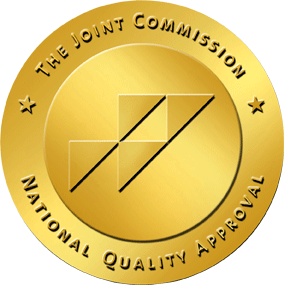In the U.S., each week, more than 500,000 people use meth to get high, and more than 25 million Americans admit to having used meth at least once. Around 1.5 million Americans are believed to struggle with a meth use disorder, and there are 23,000 overdoses each year, according to the National Institute on Drug Abuse.
Methamphetamines or meth is a stimulant usually ingested in a pill or powder form. Sometimes, a person begins using methamphetamine as a weight loss prescription, while others start using it for the high or rush. Either way, meth is highly addictive, and it can be dangerous. Addiction treatment is recommended if there are symptoms of meth abuse. The meth withdrawal process can be difficult, this is why a professional meth addiction treatment is suggested. Withdrawal symptoms can be overwhelming for the patient and the patient’s friends and family, which is why a facility with experienced staff for methamphetamine addiction is advised.
Meth detection is one of the most important steps toward meth abuse recovery. This guide looks at the ways meth affects a person, the length of time it stays in the bloodstream, and expectations during treatment:
What Is the Half-Life of Meth, and How Long Does Meth Stay in the Bloodstream?
There are a variety of factors that goes into determining exactly how long meth stays in the bloodstream. For example, the method of ingesting the drug, the size of the person, and the amount of the drug. As a general rule, the bloodstream should be completely free of meth in four or five days, although by that point, the person isn’t feeling the effects anymore.
The half-life of meth is around 10 hours. At this point, about half of the meth consumed will leave the bloodstream. At this point, the person using meth is still feeling some of the effects of the drug but not as intensely as they were at the peak at around two hours.
How Does Meth Affect a Person’s Body?
Methamphetamines fall into a class of drugs known as stimulants. While meth is a form of this drug, methamphetamines can also be found in weight loss medications and Adderall, used for concentration in young people with an attention-deficit disorder.
Meth can be ingested in various ways, including injected, snorted, smoked, swallowed, and inserted into the rectum. Depending on the method of use, the person begins to feel a rush of energy or a high. Meth detection is one of the most important steps toward meth abuse recovery.
Meth is highly addictive, and a substance abuse disorder can affect a person’s entire life, including their mental health, and leave them unable to function normally. There are both short-term and long-term effects of using meth. However, the way that meth impacts a person’s body depends on several factors.
What Are the Short-Term Effects of Meth Usage?
As soon as the meth hits a person’s bloodstream, they will begin to feel certain effects that will remain until the meth leaves their system. These short-term effects do peak and start to fade over a matter of a couple of hours.
These short-term effects can include the following:
- Feelings of euphoria
- Intense burst or rush of energy
- Rapid or racing heartbeat
- Lowered appetite
- Increased wakefulness
- Increased blood pressure
- Irregular heartbeat
- Panic
- Anxiety
- Violent outbursts
- Confusion
A person taking meth will experience many of these side effects or a sampling of most of them. Feelings, emotions, and physical side effects might occur while the person is taking meth. If a person develops a dependency on meth, there will be long-term effects, including the possibility of death due to an overdose. Meth detection is one of the most important steps toward meth abuse recovery.
What Are the Long-Term Effects of Meth Usage?
Since meth is highly addictive, many people who use the substance once develop a substance abuse disorder. There are long-term effects of meth use that compound over time and might become worse.
Some of these effects include:
- Unacceptable weight loss and malnutrition
- Rotting teeth and extensive dental issues
- Issues with irregular heartbeats and heart disease
- Stroke
- Overdose
- Depression
- Damage to the lungs and liver
- Kidney disease
- Seizures
The long-term effects of meth are serious and can be life-threatening. A person who struggles with meth substance abuse needs immediate treatment to detox and develop the tools to avoid a relapse. While overdose is a genuine concern, the long-term effects of meth abuse can be equally deadly.
Signs a Person Is Struggling With a Meth Substance Abuse Disorder
If a person struggles with a meth addiction or has a loved one who does, they might not be sure if the usage has morphed into a substance abuse disorder. Of course, when the person is using meth, they’ll experience the short-term effects, but there are some signs of addiction.
Signs of meth addiction may include:
- Lying about or hiding their usage of meth
- Legal problems
- Avoiding friends and family
- No longer enjoying things that they once did
- Unable to keep a job
- Failing to keep up with schoolwork
- Stealing to get money for meth
If any of these signs are present, it’s a good idea for the person to seek immediate treatment for substance abuse disorder.
What to Expect When Getting Treatment for Meth Addiction
When a person struggles with addiction, getting treatment is essential to avoid some of the long-term effects of using meth. The first step is to go to an inpatient program and go through detox.
Detox must be done in an inpatient setting because the withdrawal symptoms from meth can be serious, and medical professionals need to monitor the patient. Most people stay at an inpatient treatment center for 30 days. Treatment programs can help the person begin to build their foundation in recovery.
Once the person moves past the worst of the withdrawal symptoms, they begin therapy, which can include individual sessions, group therapy, and family therapy. Inpatient therapy also helps the patient focus on themselves instead of the demands of being at home.
Partner With Bellagio Residential Treatment Center for Treatment of Meth Addiction
While the length of time that meth stays in a person’s body depends on a few factors, in most cases, the meth will be out of the bloodstream in a few days. A person who struggles with meth abuse or has someone who does needs to seek treatment immediately to ensure their health and safety.
At Bellagio Residential Treatment Center, we provide compassionate care to help a person overcome their addiction to meth. Our team offers support and therapy that gives a person the skillset they need to lead a more sober lifestyle. Contact us today to learn more about our program and how we can help.






